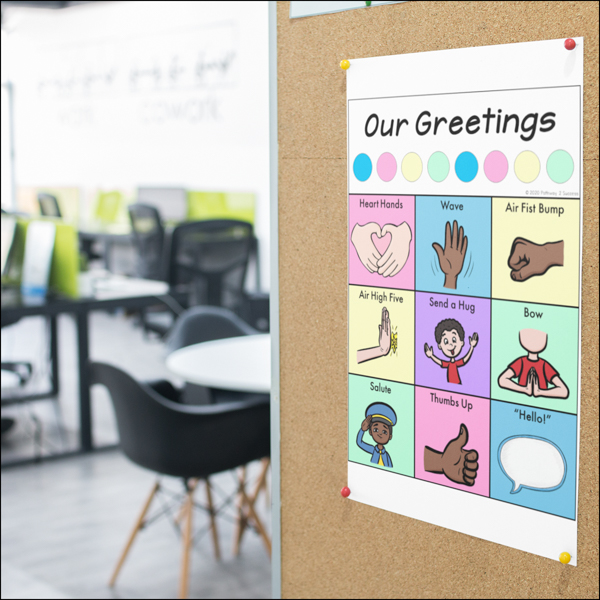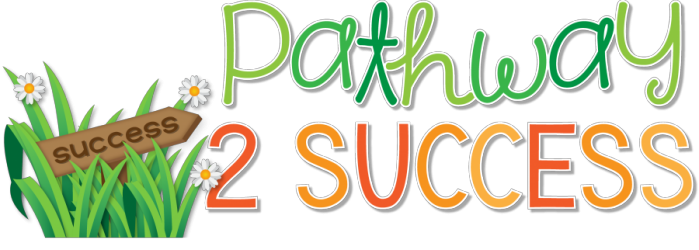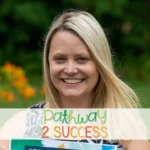
Classroom community matters. Amazing things can happen when the classroom has a strong community. This is when students feel a true sense of belonging, mutual respect for peers and adults in the room, and and overall sense of responsibility to work on goals together. Simply put, your classroom community is a foundational element of success for every one of your learners and it’s always worth investing in.
Focusing on Classroom Climate and Community
A substantial amount of research supports the idea that a classroom community makes a big difference. With a greater focus on strong and meaningful relationships, students begin to act not just as kids in a classroom, but a true community of learners. This means improved collaboration, stronger friendships, and inclusion for all. It also means better learning opportunities and more focused instruction time.
- A positive classroom community facilitates stronger learning. When students feel connected, respected, and supported, they are more likely to feel and do their best. Learners are also more likely to take academic risks to learn and grow. Ultimately, this opens the door for more learning opportunities for all.
- A strong classroom community means improved behavior. When the classroom functions as a true community, students make positive choices because it’s the right thing to do (not out of fear of consequence or desire for extrinsic reward).
- It is building a place where every voice matters. All learners deserve a voice; all learners also deserve to know their voice matters. Focusing on your classroom community supports these ideas in a big way.
- A positive classroom community continually reinforces critical SEL skills. Social-emotional skills are big ideas that need to be practiced again and again. In a positive classroom community, learners are immersed in an environment focused on respect, relationships, responsibility, and fairness.

Here are 10 social-emotional strategies to build a positive classroom community:
1. Morning Meeting
Morning meeting is a semi-structured time of the day when students can gather, talk about topics that matter, and learn from each other. With just a few simple steps, morning meeting can help strengthen relationships, build confidence, and foster a positive classroom community that has big impacts in the long-term.
The truth is that morning meetings can be done many different ways, but I think it helps to focus on one skill for the day. Start with greetings, give a quick skill introduction, start a discussion, and do some simple activities. Bonus: I created a set of morning meeting activity cards if you want to give it a try.

2. Daily Greetings
Perform daily greetings as students walk in the room. While this activity focuses to build relationships and strengthen connections, research shows that teacher greetings also improved student on-task behavior. Just a note: greetings don’t have to be complicated or fancy. One strategy is to greet the students at the door with their name and one positive statement. For example, you might say, “Good morning, Tasha. I’m so glad you’re here today,” or “Hi Sammy. I heard you scored a goal in the soccer game, nice job!”
Use a free morning greetings poster to remind your students the many ways they can greet you right as they walk in the room.

3. Daily Reflection Time
Daily reflection time is a dedicated time at the end of the day where students can share what went well, what they’re proud of, what they learned, and even how they want to improve for tomorrow. Use guided reflection questions to spark meaningful conversations with your learners.

4. Show-and-Tell
Give students a dedicated time to share things that are important to them. This might be sharing a trophy they won at a gymnastics competition or talking about a trip they took with their grandparents. Not only does this activity help each student feel proud and accomplished by sharing pieces of them, it can build meaningful relationships as students learn about each other too.

5. Gratitude Share
Gratitude means appreciating what we have. Spend a few minutes each day having students reflect about things they are grateful for. A few gratitude practices to try include:
- Use a daily gratitude journal to write down 3 things you are grateful for.
- Have students write down one thing they are grateful for each day. Put these in a jar to read another day.
- Create a gratitude bulletin board. Have students write down things they are grateful for and add them to the bulletin board throughout the year.
- Gather in a circle and toss or hold a ball. Whoever gets the ball can share something they are grateful for.

6. Game Time
Games are always fun, but they’re also a great way to strengthen relationships and integrate social-emotional skills at the same time. Give game time to your students after the end of a busy week or when they need a break.

If you need some ideas, check out these SEL Board Games for your class.
7. Positive Affirmations
Positive affirmations are a simple way to encourage a positive mindset and strengthen confidence. These qualities help build a positive classroom climate. Try reading a positive affirmation of the day, or have students develop their own positive affirmation lists to read once a day. I love this free positive self-talk phrases poster as a simple daily reminder.

8. SEL Group Chat
Meaningful conversations can be one of the best ways to build community. Spark meaningful conversation with your students using social-emotional prompts. Just a few to try include:
- What are five positive qualities about you?
- Imagine you are working in a group. How can you show you are a responsible partner?
- What are some skills you feel most confident in?
- What does it mean to compromise?
- Problem: You don’t have a pencil in class. What can you do?

Grab these Social Emotional Task Cards filled with prompts to get started.
9. Kindness Share
Remind students that kindness and respect are all around us with a kindness share. For this activity, students can share kindness that they’ve seen or experienced that day. You can try this activity standing in a circle and tossing a boss. Another idea is to create a “chain of kindness” with slips. For this, have students write down what kind acts they have seen on a slip of paper. Loop the slip around and keep adding to it, creating a chain of kindness that remains visible throughout the year.

10. “What Would a Friend Do?”
For this activity, provide a scenario and ask kids to share: “What would a friend do?” This provides guided practice in real-life scenarios and opportunities for students to learn from each other. A few scenarios include:
- A student is eating lunch by themselves.
- A classmate gets a new pair of shoes and shows them to you.
- A friend won a race.
- A classmate is crying, and you don’t know why.

If you love these cards, they’re part of this SEL Curriculum Relationships Unit.
11. Success Share
Provide time for students to share out their “Weekly Wins.” This can be something new they learned, a skill they acquired, or an improvement they made on a particular goal. What’s important here is that every student might have their own individual goal, but the class is all working together to cheer each other on.

12. Practice Mindfulness
Mindfulness is a self-regulation strategy. When students feel calm and in control, they can think more clearly and they can feel their best. In turn, this supports a calm, focused, and positive classroom community for all. Use some of the mindfulness strategies:
- Mindful breathing – Practice mindful breathing techniques together.
- Mindful journaling – Use mindfulness-based journal prompts to respond to in writing.
- Use mindfulness tools – Try hands-on mindfulness tools, such as pinwheels and bubbles.

13. Hold Class Meetings
A class meeting or circle is a safe time to sit down as a group and talk openly. During this time, students can talk about what is happening, discuss how they are feeling, and problem-solve any challenges together. Class meetings serve as both a proactive tool for reducing issues and an intervention for current challenges happening in the class. For example, you can hold class meetings proactively just to touch base about how everyone is feeling. You can also hold a class meeting to work through a specific problem or challenge that is happening in your class.

14. Practice Including Others
Including others is a critical component to a positive classroom climate. Discuss real strategies kids can use to include others each day, from asking someone new to sit with you to working with a different partner on assignments.

If you want to teach about including others, check out this SEL Relationships unit.
15. Use Team-Building Games & Activities
Many games and activities lend themselves to strengthening the classroom community. Give these a try:
- Hula hoop pass – Have students stand in a line holding hands. The person at the end starts with the hula hoop. The goal is to move the hula hoop all the way to the end while they keep holding hands.
- Human knot – Have students stand in a circle. They will need to hold their arms out and hold hands with someone who is not next to them. The goal is to unravel the human knot, all while not letting go of their hands.
- Build-It challenge – Have students work together in small groups to build or create something. For example, you can assign them to build the tallest tower. Provide the materials you have on hand and watch them work together to make it happen.

16. Practice Conflict Resolution Skills
In order for kids to manage conflicts, they have to know what strategies to use. Teach and discuss different strategies learners can use to work through problems amicably with others. Some of those strategies include talking it out, walking away, using an I-statement, sharing, compromising, and apologizing. Ultimately, these skills build relationships.

Side note: Conflict resolution skills are covered in this SEL Curriculum unit on relationships.
17. Community Service Projects
Help students plan and create community service projects for your school or local area. Some idea might include holding a food drive, raising money for a pet shelter, or cleaning up a local park or playground.

Whatever you choose, remember that you have multiple ways to build your classroom community each and every day!







Leave a Reply